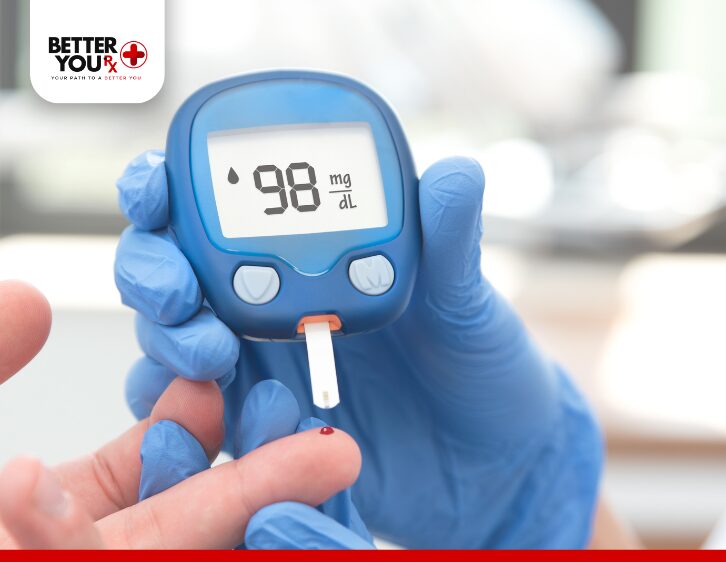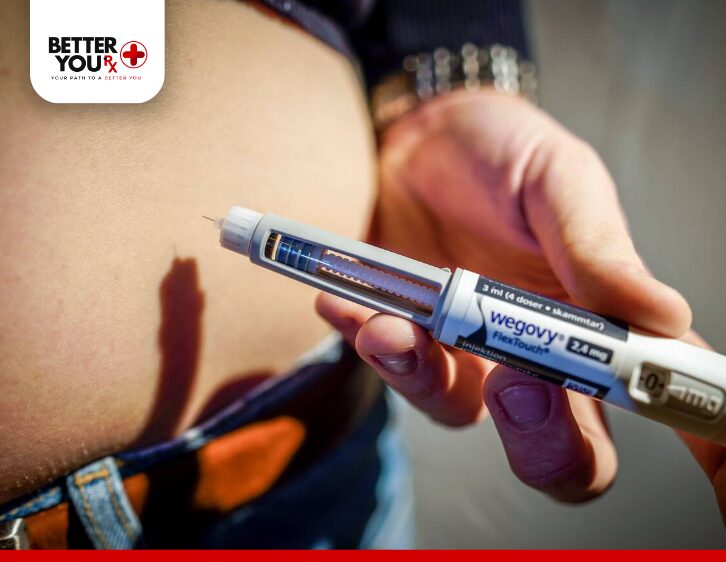What is Farxiga Used for and How Does It Work?
Farxiga (dapagliflozin) is a medication primarily used for treating type 2 diabetes, heart failure, and chronic kidney disease (CKD). It is part of a drug class called sodium-glucose cotransporter 2 (SGLT2) inhibitors.
This medication has become a vital treatment option for people managing complex health conditions such as diabetes and heart failure. Farxiga works by helping to control blood sugar levels, improve heart function, and protect kidney health, making it a versatile option for individuals with multiple health concerns. In this article, we will explore what Farxiga is used for, how it works, its benefits, and potential side effects.
What is Farxiga Used for?
Farxiga is used for several conditions, including type 2 diabetes, heart failure, and chronic kidney disease (CKD). It has proven to be effective in managing these conditions and preventing complications.

- Type 2 Diabetes: Farxiga is commonly prescribed for managing blood sugar levels in individuals with type 2 diabetes. This condition is characterized by insulin resistance, which leads to elevated blood sugar levels. By improving the way the body handles glucose, Farxiga helps lower blood sugar levels, especially when used alongside diet and exercise. This is crucial for people with diabetes, as managing blood sugar is key to preventing complications such as nerve damage, heart disease, and kidney failure.
- Heart Failure: In individuals with heart failure, the heart is unable to pump enough blood to meet the body’s needs. Farxiga has shown to significantly reduce the risk of hospitalization and death related to heart failure. It is particularly effective for individuals whose heart is weakened and struggles to pump blood efficiently. By helping to lower blood pressure and reduce fluid retention, Farxiga plays a vital role in improving heart function and preventing further complications in heart failure patients.
- Chronic Kidney Disease (CKD): Chronic kidney disease is a condition where the kidneys gradually lose their ability to filter waste from the blood, leading to a buildup of toxins in the body. Farxiga is used to reduce the risk of kidney function worsening in individuals with CKD, particularly in those with type 2 diabetes. It also helps to prevent end-stage kidney disease (ESKD), which can lead to kidney failure and require dialysis or a kidney transplant. By reducing the pressure inside the kidneys and promoting better kidney function, Farxiga helps protect against the long-term progression of CKD.
- Cardiovascular Risk in Type 2 Diabetes: Individuals with type 2 diabetes often face an increased risk of cardiovascular diseases such as heart attack, stroke, and heart failure. Farxiga helps lower the risk of hospitalization for heart failure in individuals with type 2 diabetes who have cardiovascular disease or multiple risk factors for heart-related conditions. This makes it a valuable treatment for managing both diabetes and heart-related complications simultaneously.
How Does Farxiga Work?
Farxiga works by inhibiting a protein called sodium-glucose cotransporter 2 (SGLT2) in the kidneys. This protein is responsible for reabsorbing glucose (sugar) back into the bloodstream after it is filtered by the kidneys. When Farxiga blocks SGLT2, glucose is instead excreted through the urine, lowering blood sugar levels in people with type 2 diabetes.

Farxiga also has beneficial effects on heart failure and chronic kidney disease:
- Improving Blood Sugar Levels in Type 2 Diabetes: Farxiga works by increasing the excretion of glucose in the urine. This aids in reducing blood sugar levels in individuals with type 2 diabetes. Unlike some medications that only lower blood sugar by increasing insulin production, Farxiga works independently of insulin, making it a useful option for individuals with insulin resistance.
- Supporting Heart Health in Heart Failure: Farxiga reduces the amount of sodium reabsorbed by the kidneys, which leads to lower blood pressure and less fluid buildup in the body. This makes it easier for the heart to pump blood more efficiently. Additionally, Farxiga reduces the activity of the sympathetic nervous system, which is often overactive in people with heart failure. This system, when overactive, can worsen heart failure by increasing the heart’s workload. By regulating the sympathetic nervous system, Farxiga helps reduce this burden on the heart.
- Protecting Kidney Function in Chronic Kidney Disease: In individuals with chronic kidney disease, Farxiga helps by lowering intraglomerular pressure, which is the pressure inside the glomeruli (the small blood vessels that filter the blood in the kidneys). This reduction in pressure can slow the progression of kidney damage, helping to preserve kidney function over time. Although the exact mechanism is still under study, this action appears to protect the kidneys from further deterioration.
The Benefits of Farxiga
Farxiga offers multiple benefits for individuals with type 2 diabetes, heart failure, and chronic kidney disease:
- Blood Sugar Control: One of the primary benefits of Farxiga is its ability to help control blood sugar levels in people with type 2 diabetes. By promoting the removal of excess glucose through urine, Farxiga helps lower blood sugar and prevents the complications associated with poorly managed diabetes.
- Heart Failure Management: Farxiga has been shown to significantly reduce the risk of hospitalization and death due to heart failure. It helps by decreasing the strain on the heart, reducing fluid retention, and improving overall heart function. This is particularly beneficial for individuals with a weakened heart who are at high risk of further complications.
- Kidney Protection: For individuals with chronic kidney disease, Farxiga can slow the progression of kidney damage. By reducing intraglomerular pressure and promoting healthier kidney function, it helps protect the kidneys from further damage, potentially delaying the need for dialysis or a kidney transplant.
- Reduced Risk of Cardiovascular Events: For people with both type 2 diabetes and cardiovascular disease, Farxiga is effective in reducing the likelihood of hospitalization for heart failure in patients with type 2 diabetes, particularly those with cardiovascular disease or numerous risk factors for heart disease.
Possible Side Effects of Farxiga
While Farxiga is generally well-tolerated, it can cause side effects in some individuals. The most common side effects include:
- Urinary Tract Infections: Farxiga increases glucose in the urine, which can lead to urinary tract infections or yeast infections in some individuals.
- Increased Urination: Since Farxiga helps excrete glucose through urine, it can lead to increased urination.
- Dehydration: Increased urination can lead to dehydration, which may cause dizziness, fainting, or low blood pressure.
- Kidney Function Changes: In rare cases, Farxiga can cause a decrease in kidney function. It is advised to regularly monitor kidney function throughout the treatment.
- Low Blood Pressure: Because Farxiga reduces fluid retention, it can sometimes cause low blood pressure, leading to symptoms such as dizziness or fainting, especially when standing up quickly.
Who Should Not Take Farxiga?

Farxiga is not suitable for everyone. It should not be taken by individuals with:
- Severe Kidney Problems: Those with severe kidney disease or failure should avoid Farxiga.
- Allergic Reactions to Dapagliflozin: People with known allergies to dapagliflozin or any of the ingredients in Farxiga should not use this medication.
- Pregnancy and Breastfeeding: Farxiga is not recommended during pregnancy or breastfeeding due to potential risks to the baby.
Conclusion
Farxiga is a versatile medication that plays a crucial role in managing type 2 diabetes, heart failure, and chronic kidney disease. By improving blood sugar control, supporting heart health, and protecting kidney function, Farxiga offers multiple benefits for individuals with these chronic conditions. If you have diabetes, heart failure, or chronic kidney disease, Farxiga may be an effective part of your treatment plan. However, it is essential to consult with your healthcare provider to determine whether this medication is right for you.
Disclaimer: The information in this article is provided for educational purposes and should not replace professional medical advice. Always consult with a healthcare provider before starting or changing any treatment plan.





